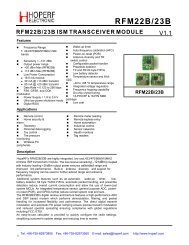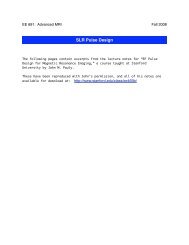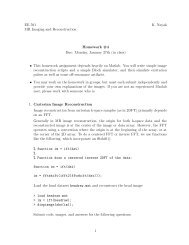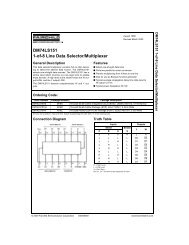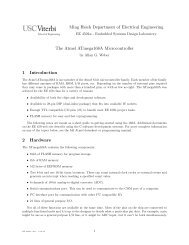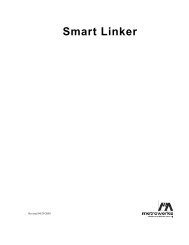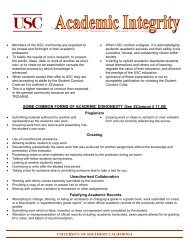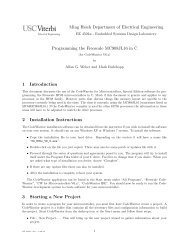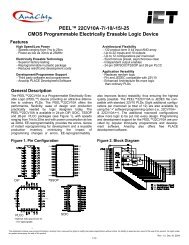PCF8563 Real time clock/calendar
PCF8563 Real time clock/calendar
PCF8563 Real time clock/calendar
Create successful ePaper yourself
Turn your PDF publications into a flip-book with our unique Google optimized e-Paper software.
NXP Semiconductors <strong>PCF8563</strong><br />
14. Handling information<br />
15. Soldering<br />
<strong>Real</strong> <strong>time</strong> <strong>clock</strong>/<strong>calendar</strong><br />
Inputs and outputs are protected against electrostatic discharge in normal handling.<br />
However, to be completely safe you must take normal precautions appropriate to handling<br />
MOS devices; see JESD625-A and/or IEC61340-5.<br />
This text provides a very brief insight into a complex technology. A more in-depth account<br />
of soldering ICs can be found in Application Note AN10365 “Surface mount reflow<br />
soldering description”.<br />
15.1 Introduction to soldering<br />
Soldering is one of the most common methods through which packages are attached to<br />
Printed Circuit Boards (PCBs), to form electrical circuits. The soldered joint provides both<br />
the mechanical and the electrical connection. There is no single soldering method that is<br />
ideal for all IC packages. Wave soldering is often preferred when through-hole and<br />
Surface Mount Devices (SMDs) are mixed on one printed wiring board; however, it is not<br />
suitable for fine pitch SMDs. Reflow soldering is ideal for the small pitches and high<br />
densities that come with increased miniaturization.<br />
15.2 Wave and reflow soldering<br />
Wave soldering is a joining technology in which the joints are made by solder coming from<br />
a standing wave of liquid solder. The wave soldering process is suitable for the following:<br />
• Through-hole components<br />
• Leaded or leadless SMDs, which are glued to the surface of the printed circuit board<br />
Not all SMDs can be wave soldered. Packages with solder balls, and some leadless<br />
packages which have solder lands underneath the body, cannot be wave soldered. Also,<br />
leaded SMDs with leads having a pitch smaller than ~0.6 mm cannot be wave soldered,<br />
due to an increased probability of bridging.<br />
The reflow soldering process involves applying solder paste to a board, followed by<br />
component placement and exposure to a temperature profile. Leaded packages,<br />
packages with solder balls, and leadless packages are all reflow solderable.<br />
Key characteristics in both wave and reflow soldering are:<br />
• Board specifications, including the board finish, solder masks and vias<br />
• Package footprints, including solder thieves and orientation<br />
• The moisture sensitivity level of the packages<br />
• Package placement<br />
• Inspection and repair<br />
• Lead-free soldering versus PbSn soldering<br />
15.3 Wave soldering<br />
Key characteristics in wave soldering are:<br />
<strong>PCF8563</strong>_5 © NXP B.V. 2007. All rights reserved.<br />
Product data sheet Rev. 05 — 17 July 2007 26 of 32



